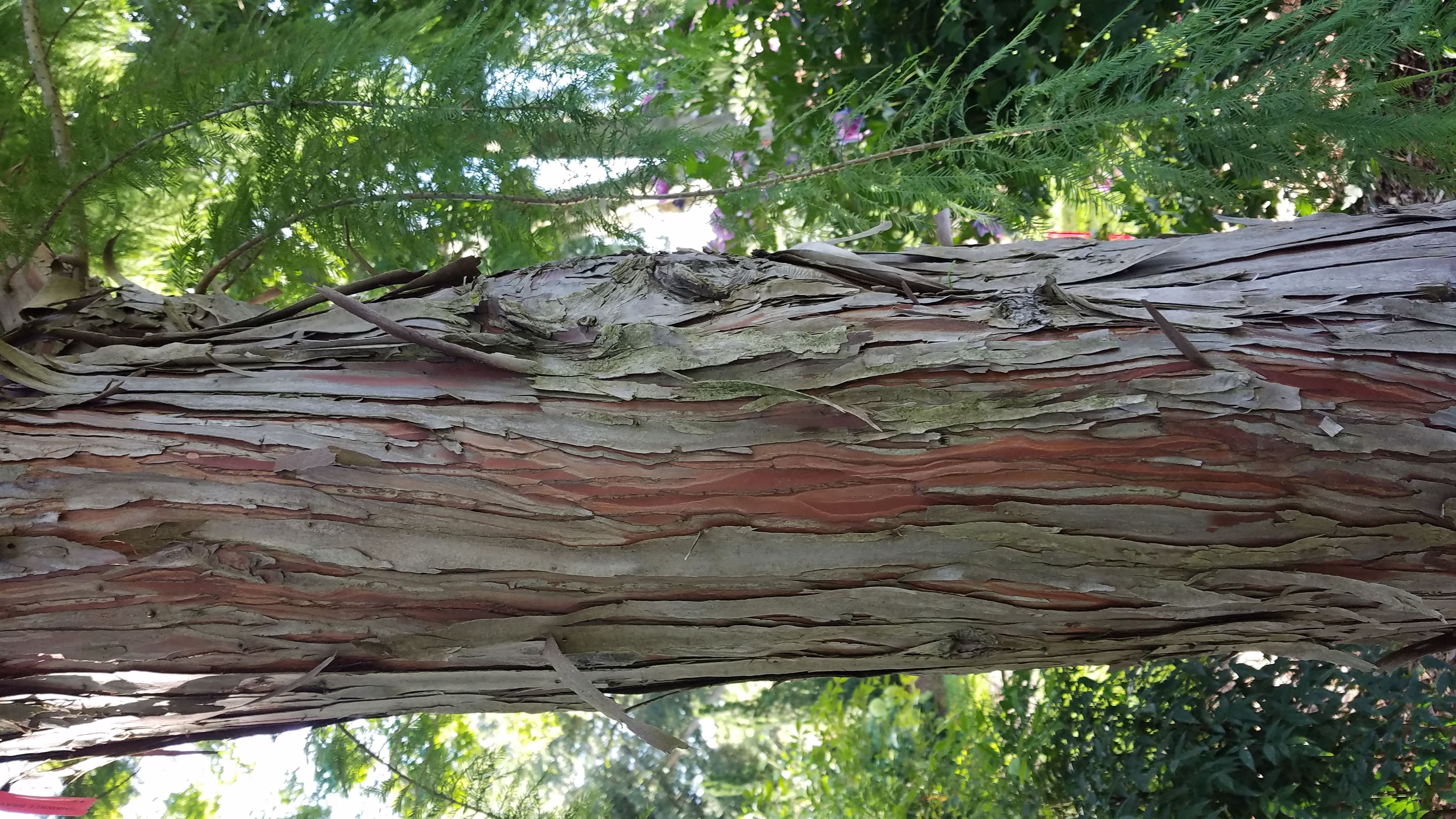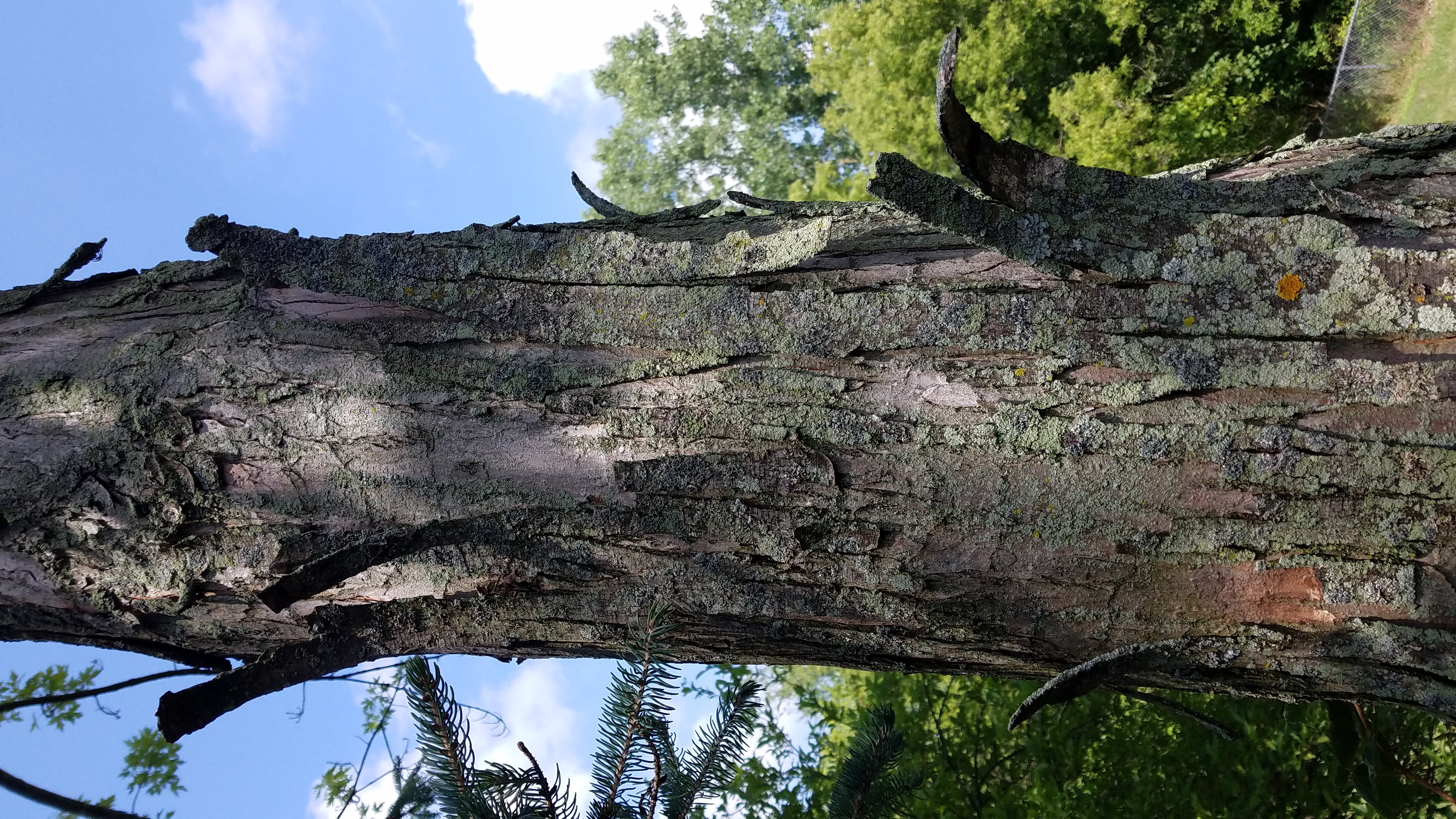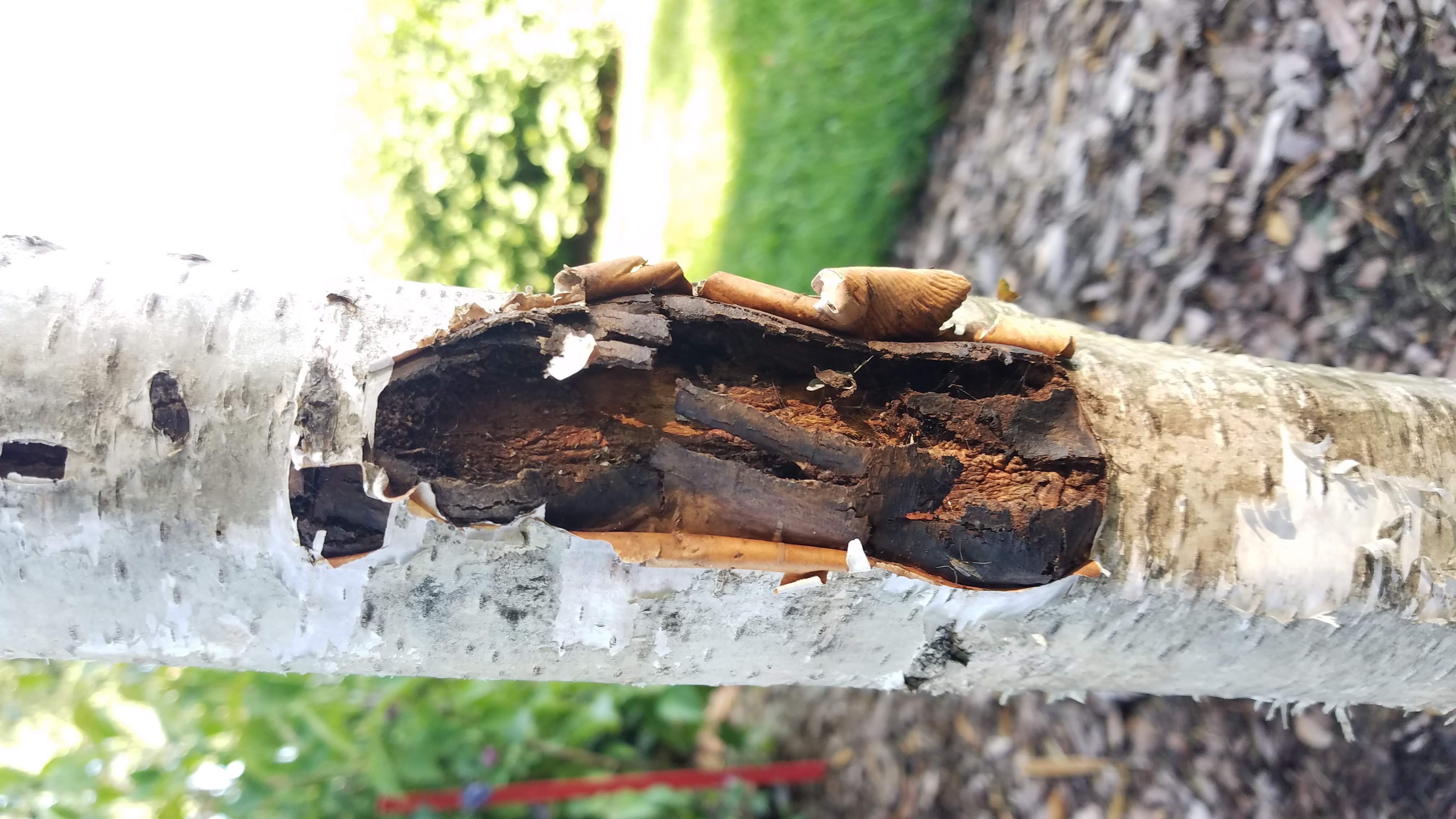Bark shedding from trees during summer
Some trees naturally lose bark over time, and this may not be a sign of tree decline.

Seeing parts of trees curl up or fall to the ground is a cause of concern for Michigan gardeners. For some trees, shedding or peeling of bark is a normal occurrence during the summer as part of the natural aging process. This includes commonly planted trees such as American sycamore, silver maple, Scots pine, redbud, London planetree, shagbark hickory and birch.
Bark loss is quite dramatic in some species. One of these, sycamore, is a long-lived street tree that can thrive in urban areas due to its tolerance of poorly aerated or wet soils. Newer growth on sycamore bark pushes onto the outer layer, causing it to crack and peel. Over time, this outer layer thickens, dies, and falls off the tree (Photo 1).
Regular cleanup is the biggest nuisance a gardener will face. During summer, it may require raking or sweeping bark remnants from the sidewalk and grass multiple times per week. Several reasons may explain higher than average rates of bark loss. The greatest amount of bark loss occurs after stretches of hot days or after high wind events.
Protection from leaf-eating caterpillars is another proposed explanation for sycamore’s bark shedding. The white color on newer bark provides a contrast that makes it harder for herbivores to hide and easier for them to be spotted by hungry birds. Other trees that lose bark in large sections or strips include paper birch, London planetree and bald cypress (Photo 2).

Unlike sycamore, many trees with peeling bark hold on to most of their bark. Silver maple trees are often used in landscapes because they are fast growing, providing ample shade in fewer years than most other trees. On young trees, the bark is smooth and thin. As the tree diameter increases over the years, new layers of bark develop under the original bark, which breaks apart, forming deep ridges and furrows. Eventually, sections of outer bark, often a few feet long, separate from the trunk, lifting away at both ends, but remaining attached in the middle (Photo 3). For many people, this adds to the beauty of the tree, but to the uninitiated, it can be alarming to see sections of bark peeling away from the tree. Although most will remain attached, some sections of bark will break away naturally and drop from the tree or will be pulled off by squirrels or curious children.

This list of trees is not all-inclusive for trees that normally lose bark, and sometimes bark loss can be an indication that there is a problem. Vertical splitting of bark enlarged sections of growth around the trunk or branches, and cankers or open wounds (Photo 4) may be clues to a disease or environmental stress. The Michigan State University Plant & Pest Diagnostics lab offers additional resources on caring for trees, knowing when fertilizer is useful, and how to find an arborist to diagnose problems in person.




 Print
Print Email
Email